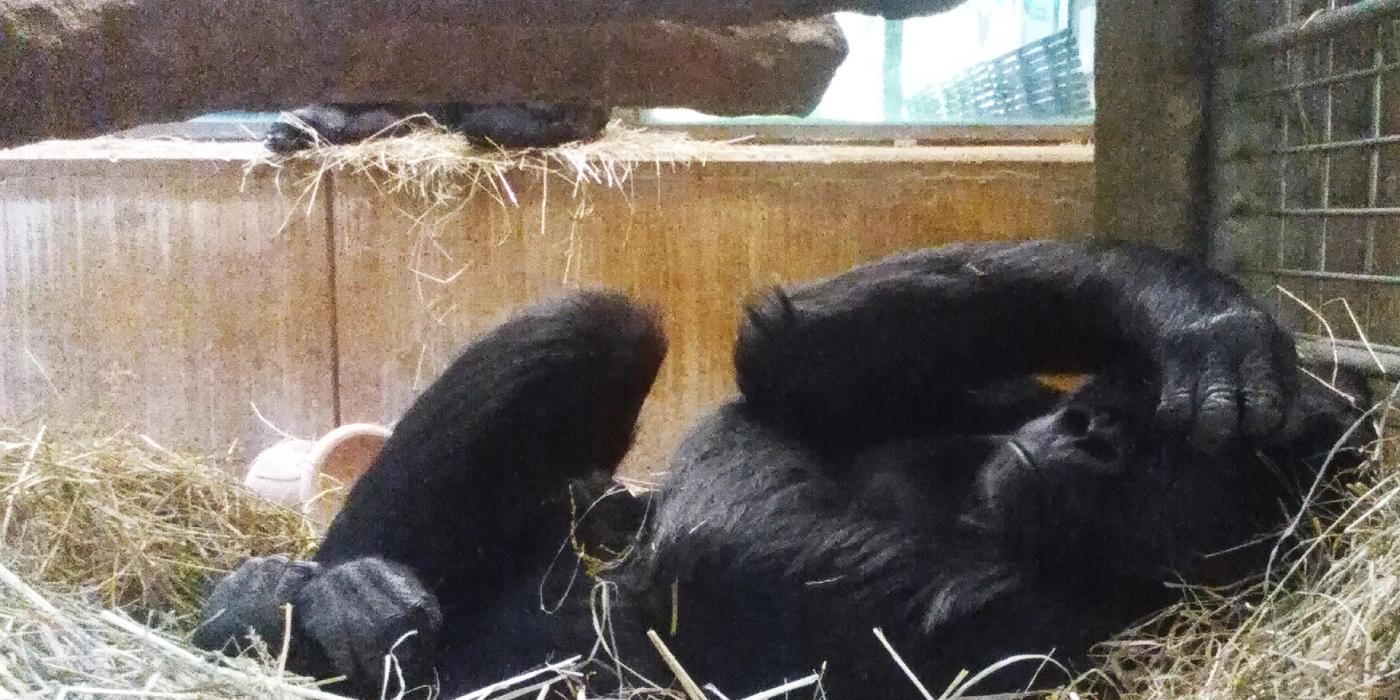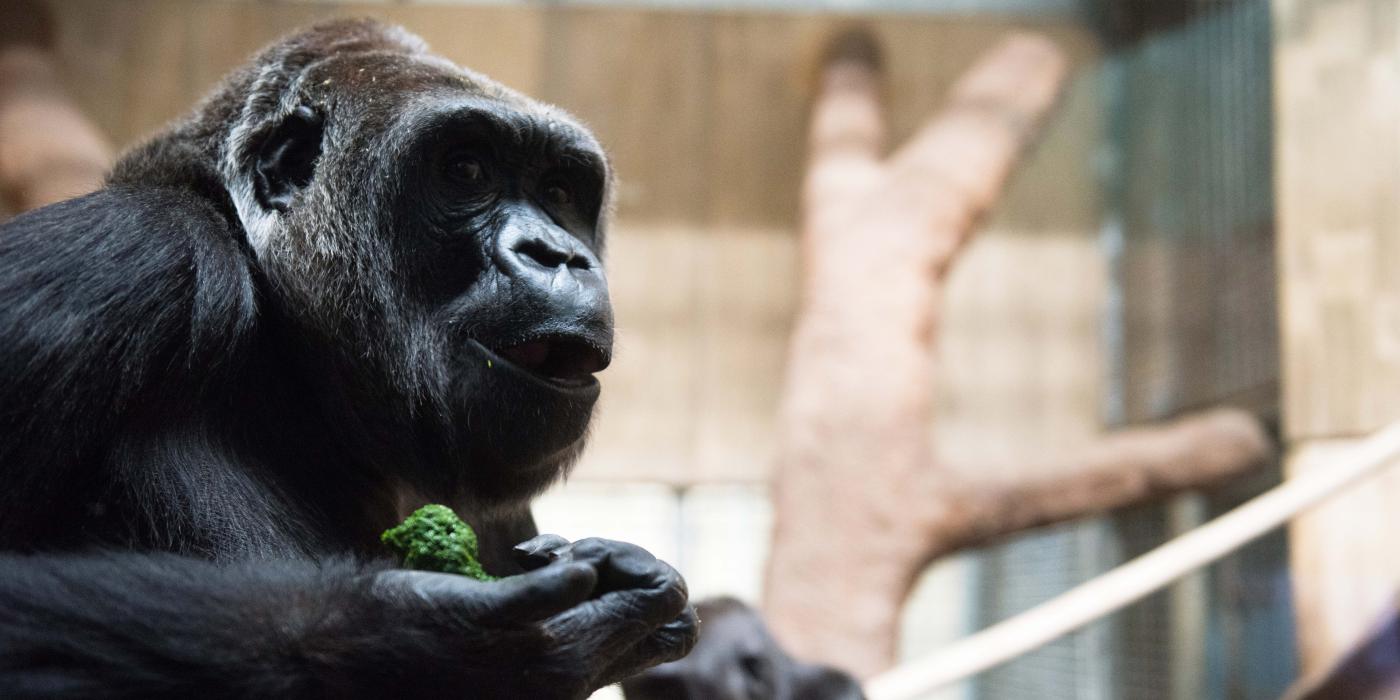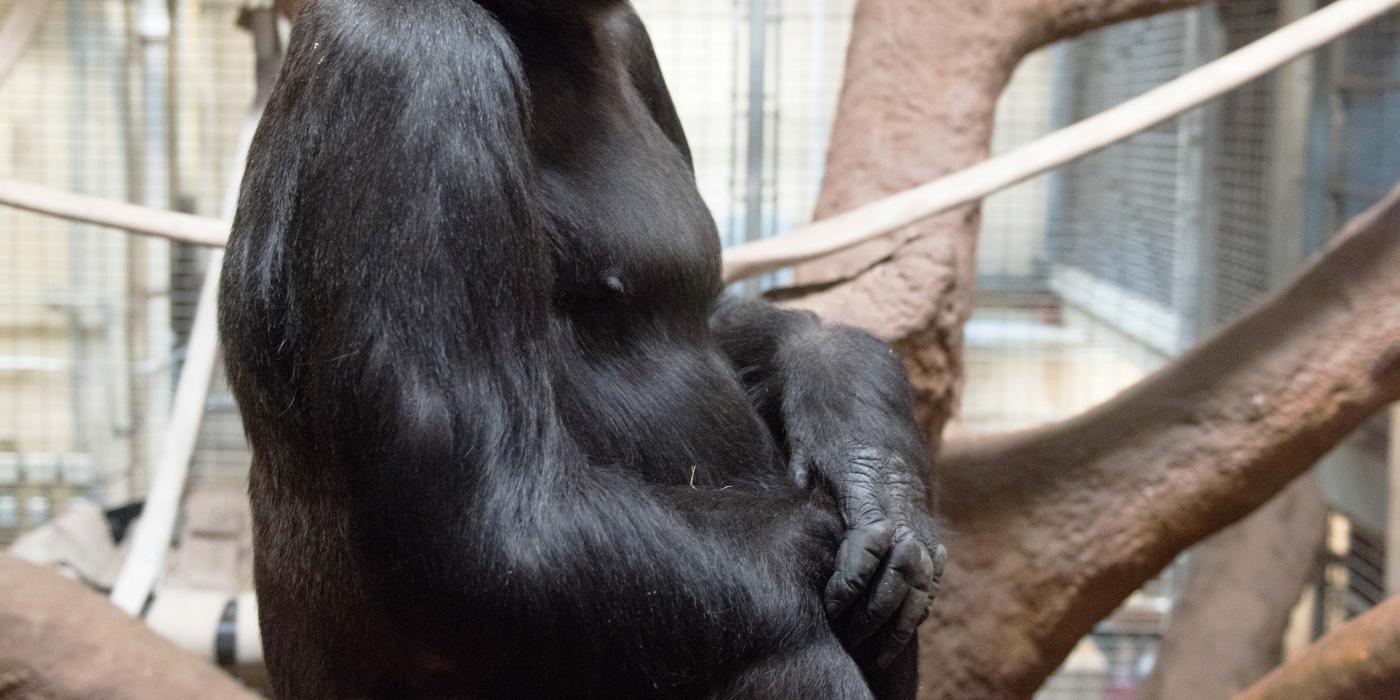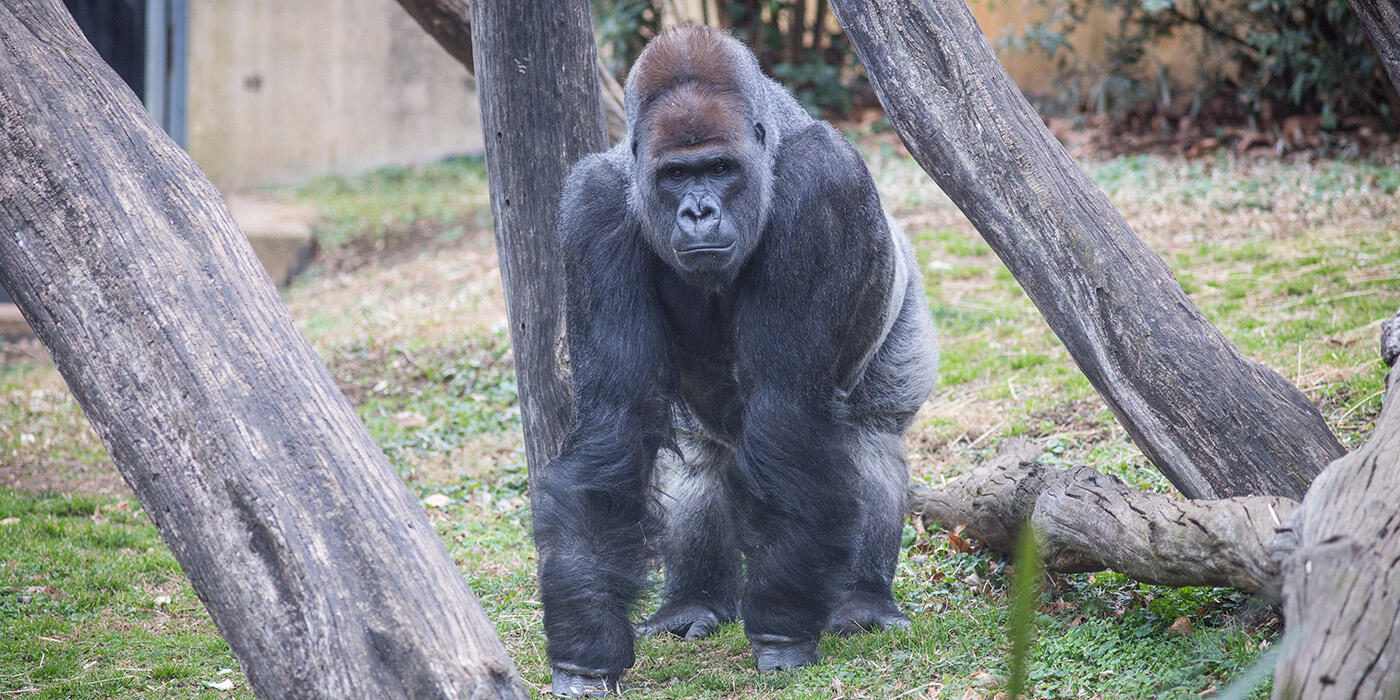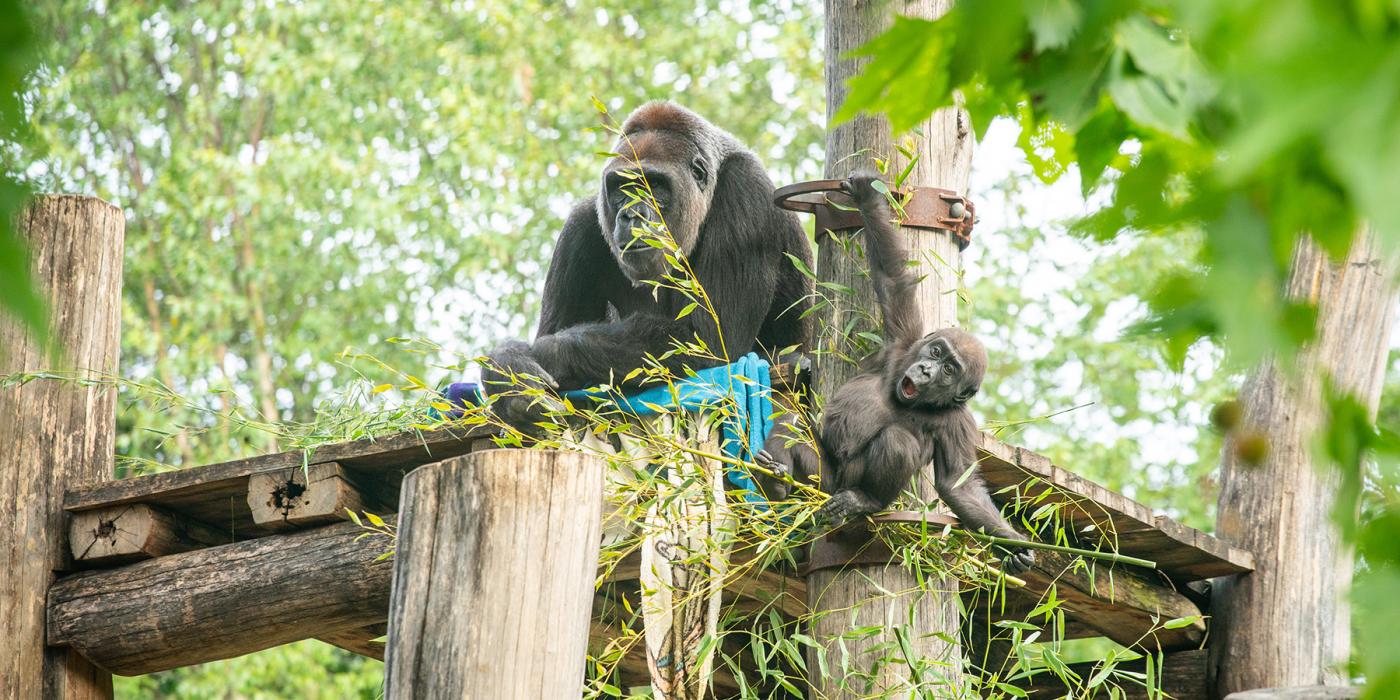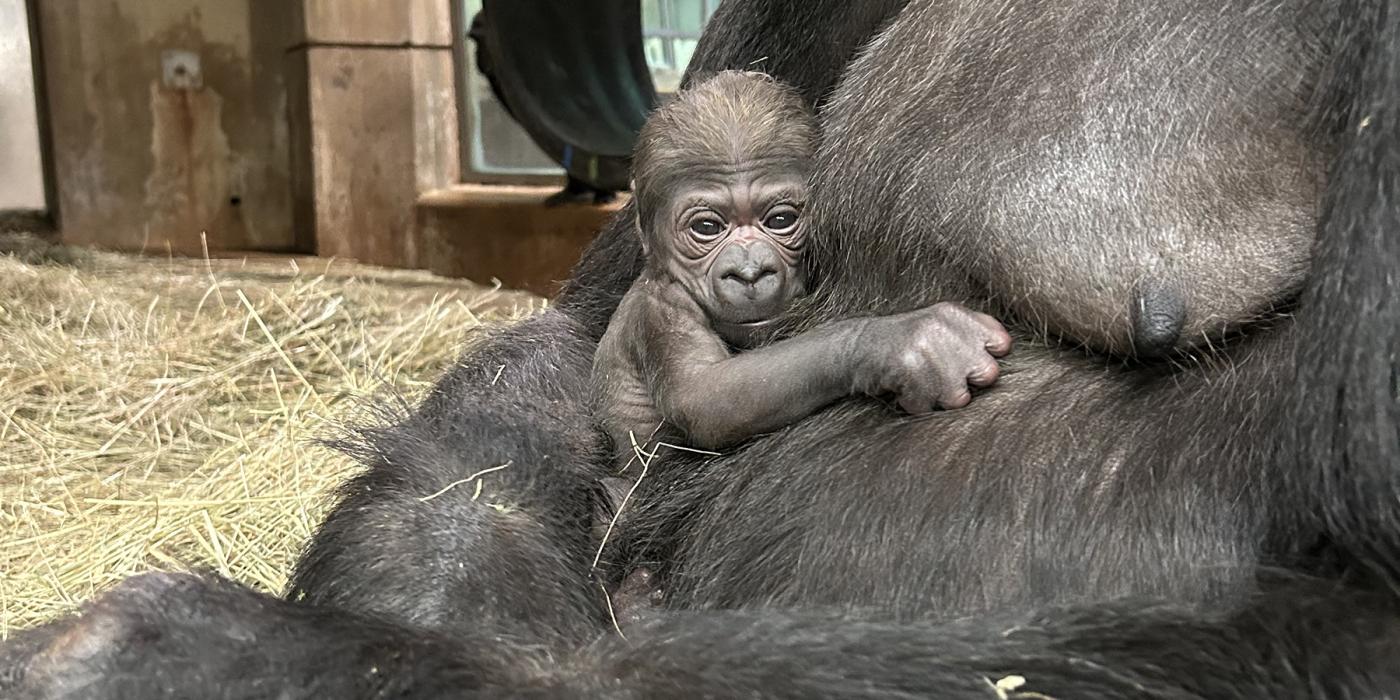#GorillaStory: Morning Sickness and Eating for Two
Western lowland gorilla Calaya recently entered her second trimester of pregnancy. On average, gorilla gestation lasts about eight-and-a-half months. Just like other members of the great ape family—including humans—gorillas experience weight gain, and some experience bouts of morning sickness.
Gorillas spend most of the day foraging, and keepers scatter a variety of vegetables (squash and carrots), leafy greens (romaine lettuce, bok choy and kale), browse (bamboo, Bradford pear or maple) and alfalfa hay about the enclosure for the apes to find and eat. Fruit is also on the menu; on any given day, the gorillas may receive bananas, mangoes, oranges or apples. Grapes—Calaya’s favorite food—are largely reserved for training sessions as a reward for successfully completing a husbandry behavior. Finally, biscuits round out the apes’ diet and provide the extra fiber they need to aid digestion.
“Before Calaya was pregnant and in the early weeks of pregnancy, she would devour every biscuit she had, and then she would hang around the other gorillas to try to snag some of theirs,” primate keeper Melba Brown recalls.
Then, suddenly, the gorilla’s appetite changed.
The morning of Sept. 5, Brown called Calaya to the mesh for her breakfast, but the mom-to-be was resting on a nest constructed out of hay and blankets, her arm draped over her eyes. The primate team was initially concerned by Calaya’s withdrawn behavior, and they kept a close eye on her throughout the day.
The following morning, Calaya was bright, alert and back to her normal self, according to Brown. However, there was one distinct difference. Great ape keepers noticed that Calaya had lost her appetite for biscuits. They quickly brainstormed ways to ensure that Calaya was getting adequate nutrition. Soaking her fiber-filled treats in diluted pineapple, apple or grape juice encouraged her to eat more, and she has since returned to eating her normal portion.
“Now that Calaya is eating for two, the Zoo’s nutritionist has increased her diet to accommodate her growing appetite,” says Brown. “Before she was pregnant, Calaya would eat her fruits and vegetables but leave some leafy greens. These days, she eats all of the food she can get her hands on, even if it is someone else’s diet! Since September, she’s gained about 7 pounds, which is on par with what other gorilla moms have gained at this point in their pregnancy.”
Preserving the positive relationship between Calaya and her keepers is essential as her pregnancy progresses.
“I want Calaya to feel comfortable coming to me, even if she does not feel well. I work with her every day to maintain and build upon the trust she has placed in me as her keeper. I value my role as Calaya’s caretaker, and she responds well to a gentle touch. Pregnancy isn’t always an easy process, so I want to do everything that I can to help her feel at ease and confident as her delicate state progresses.”
Follow the Zoo’s updates throughout Calaya’s pregnancy on Facebook, Twitter and Instagram with the hashtag #gorillastory.
Related Species:

